Top Boxes for Scotland's Premier Water Project
21st December 2011
Source:
CEE Norm U.K Ltd
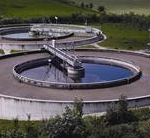
Engineers working on a flagship project for Scottish Water have installed over 400 top of the range electrical enclosures and junction boxes from Hensel.
Glencorse Water Treatment Works is a greenfield development and will soon be on-line supplying 70 percent of Edinburgh’s drinking water. It will replace two existing plants, Alnwickhill and Fairmilehead, both of which are of Victorian origin and despite having served Edinburgh well, are now ready for replacement.
The overall objective is to provide clearer, fresher drinking water to around half a million people in Scotland’s capital and support the continue economic growth of the city where possible.
“This is a very important project for Scottish Water. Edinburgh has a population of 500,000 and could grow by 20 percent in the foreseeable future. Being the second most visited tourist destination in the UK, a lot of people will depend on the reliability of Glencorse,” says Garry Hall Engineering manager of Field Systems Designs Ltd, the specialist electrical engineering company installing the lighting and cabling the process drives and instrumentation at Glencorse, as well as fire and intruder alarms. “It was essential that we installed only the best equipment and worked to the highest standards so that we can be sure of long-term reliability.”
To this end Garry and his team reassessed many of the items of equipment they would normally use in light of the long life expectancy of the plant. It was clear that many different sizes of junction box would be needed, yet it would be advantageous to procure them all from a single range if possible, in order to keep costs as low as possible. To rationalise the project requirements Katherine Beddard, FSDL Project Engineer for Glencorse, classified the junction boxes by both size and configuration.
“We were also concerned with the IP rating and impact resistance as some installation points were outside and in harsh environments. At this point we began to see potential suppliers. Delivery is always an issue on big projects, so we focussed on companies that had engineering capacity in the UK.”
Hensel’s DK range was soon identified as being wide enough to meet the needs of the job and seemed to have all the quality issues addressed. A meeting was arranged with Hensel’s UK distributor CeeNorm, whose Graham Fox experience with big water industry installations was immediately apparent. He recalls:
“I realised that ease of installation – and subsequent maintenance and reconfiguration – would be key considerations. It was also clear that steel wire armoured glands would be used extensively on-site. FSDL’s experienced electricians often complain of the lack of glanding space with the off-the-shelf boxes normally supplied as the spacing between glands increases resulting in a number of the cable entry knockouts unusable. I suggested we went with the Hensel DK range and used a larger than normal spacing for the knockouts into which the glands would be mounted.”
Dave Harding, the electrical supervisor for FSDL at Glencorse said: “the junction boxes supplied were perfect for the harsh environment they were exposed to and the terminals & terminating space inside the junction boxes made the install and future maintenance much easier.
CeeNorm could perform the special knockout machining at its engineering base in Telford, making most of the boxes ahead of schedule but always being ready for the inevitable last minute extra call-off.
The DK cable junction boxes are to a solid, modern and user friendly design, so ticked the main boxes for Glencorse. They are halogen- and silicone-free, meeting stringent environmental specifications, while their stainless steel quick fastening screws meet installation and longevity needs. The vibration tolerant terminals were suitable for a site under continual operation.
Hensel makes its DK range so that they can comply with IP54, 55 or 65 ratings, are VDE tested conform to the new international standard 60670-22. Critically for a large project they can take a range of cable entry options including most grommets and glands types and can be drilled or adapted on-site.
“We’ve previously used DK in really demanding applications – offshore, underground, trackside, in chemical works and power stations,” says Graham, “so are confident they can stand up to most things.”
For Garry, he likes the way DK combines high performance with aesthetics. “On a prestigious job like this you want to walk away from an installation that looks good as well as functionally correct. The fact that we could customise each box in terms of knockout size and position makes the end product look really professional.
FSDL has supported many water industry projects around the UK from its head office in Dorking, Surrey. Katherine, based in the Warrington office, worked closely with Black & Veatch engineers to optimise the lighting systems design to meet the Scottish Water specification and the needs of their operatives.
“We wanted a sound environmental design that did not waste power, yet provided suitable lighting for all areas of plant both internal and external,” she explains. “So we have many of the lights switchable locally. A Master Off switches ensures the lights are not left on overnight. The majority of the individual lighting circuits cover a large area therefore the DK junction boxes were utilised to split circuits thus reducing circuit lengths offering a more cost effective installation.
“The design hours far exceeded the normal requirements for a lighting scheme on a Water Treatment Works but the extra work is worth it when you consider the long term reduction in running costs.”
In order to achieve the best possible sustainability Scottish Water has installed a hydroelectric turbine to generate about 35% of Glencorse’s power needs. Grass roofs and sensitive building design means the whole site blends into the landscape. The use of Counter Current Dissolved Air Flotation & Filtration (CoCoDAFF) as the treatment process has significantly reduced the size and impact of the treatment works. Rather than the traditional separate process units of Dissolved Air Flotation (DAF) and Rapid Gravity Filters (RGF) the two processes are combined into one.
Katherine and Graham are both agreed that this project has been one of the most satisfying they have ever worked on.
The overall objective is to provide clearer, fresher drinking water to around half a million people in Scotland’s capital and support the continue economic growth of the city where possible.
“This is a very important project for Scottish Water. Edinburgh has a population of 500,000 and could grow by 20 percent in the foreseeable future. Being the second most visited tourist destination in the UK, a lot of people will depend on the reliability of Glencorse,” says Garry Hall Engineering manager of Field Systems Designs Ltd, the specialist electrical engineering company installing the lighting and cabling the process drives and instrumentation at Glencorse, as well as fire and intruder alarms. “It was essential that we installed only the best equipment and worked to the highest standards so that we can be sure of long-term reliability.”
To this end Garry and his team reassessed many of the items of equipment they would normally use in light of the long life expectancy of the plant. It was clear that many different sizes of junction box would be needed, yet it would be advantageous to procure them all from a single range if possible, in order to keep costs as low as possible. To rationalise the project requirements Katherine Beddard, FSDL Project Engineer for Glencorse, classified the junction boxes by both size and configuration.
“We were also concerned with the IP rating and impact resistance as some installation points were outside and in harsh environments. At this point we began to see potential suppliers. Delivery is always an issue on big projects, so we focussed on companies that had engineering capacity in the UK.”
Hensel’s DK range was soon identified as being wide enough to meet the needs of the job and seemed to have all the quality issues addressed. A meeting was arranged with Hensel’s UK distributor CeeNorm, whose Graham Fox experience with big water industry installations was immediately apparent. He recalls:
“I realised that ease of installation – and subsequent maintenance and reconfiguration – would be key considerations. It was also clear that steel wire armoured glands would be used extensively on-site. FSDL’s experienced electricians often complain of the lack of glanding space with the off-the-shelf boxes normally supplied as the spacing between glands increases resulting in a number of the cable entry knockouts unusable. I suggested we went with the Hensel DK range and used a larger than normal spacing for the knockouts into which the glands would be mounted.”
Dave Harding, the electrical supervisor for FSDL at Glencorse said: “the junction boxes supplied were perfect for the harsh environment they were exposed to and the terminals & terminating space inside the junction boxes made the install and future maintenance much easier.
CeeNorm could perform the special knockout machining at its engineering base in Telford, making most of the boxes ahead of schedule but always being ready for the inevitable last minute extra call-off.
The DK cable junction boxes are to a solid, modern and user friendly design, so ticked the main boxes for Glencorse. They are halogen- and silicone-free, meeting stringent environmental specifications, while their stainless steel quick fastening screws meet installation and longevity needs. The vibration tolerant terminals were suitable for a site under continual operation.
Hensel makes its DK range so that they can comply with IP54, 55 or 65 ratings, are VDE tested conform to the new international standard 60670-22. Critically for a large project they can take a range of cable entry options including most grommets and glands types and can be drilled or adapted on-site.
“We’ve previously used DK in really demanding applications – offshore, underground, trackside, in chemical works and power stations,” says Graham, “so are confident they can stand up to most things.”
For Garry, he likes the way DK combines high performance with aesthetics. “On a prestigious job like this you want to walk away from an installation that looks good as well as functionally correct. The fact that we could customise each box in terms of knockout size and position makes the end product look really professional.
FSDL has supported many water industry projects around the UK from its head office in Dorking, Surrey. Katherine, based in the Warrington office, worked closely with Black & Veatch engineers to optimise the lighting systems design to meet the Scottish Water specification and the needs of their operatives.
“We wanted a sound environmental design that did not waste power, yet provided suitable lighting for all areas of plant both internal and external,” she explains. “So we have many of the lights switchable locally. A Master Off switches ensures the lights are not left on overnight. The majority of the individual lighting circuits cover a large area therefore the DK junction boxes were utilised to split circuits thus reducing circuit lengths offering a more cost effective installation.
“The design hours far exceeded the normal requirements for a lighting scheme on a Water Treatment Works but the extra work is worth it when you consider the long term reduction in running costs.”
In order to achieve the best possible sustainability Scottish Water has installed a hydroelectric turbine to generate about 35% of Glencorse’s power needs. Grass roofs and sensitive building design means the whole site blends into the landscape. The use of Counter Current Dissolved Air Flotation & Filtration (CoCoDAFF) as the treatment process has significantly reduced the size and impact of the treatment works. Rather than the traditional separate process units of Dissolved Air Flotation (DAF) and Rapid Gravity Filters (RGF) the two processes are combined into one.
Katherine and Graham are both agreed that this project has been one of the most satisfying they have ever worked on.
Similar articles
More from CEE Norm U.K Ltd
- Top Boxes for Scotland's Premier Water Project 21st December 2011
- Enclosures DNV approved for marine and offshore applications 17th November 2011
- Type tested, modular junction boxes and distribution boards key to reliable, cost-effective solar power installation 1st November 2011
- Junction boxes assure functional integrity in the event of fire 24th October 2011

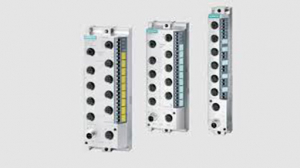
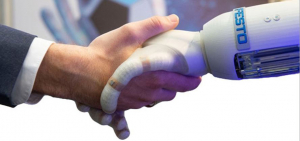
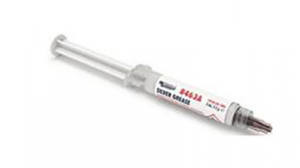
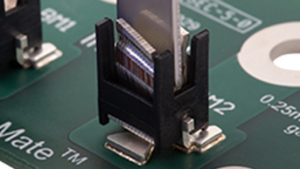







Write a comment
No comments